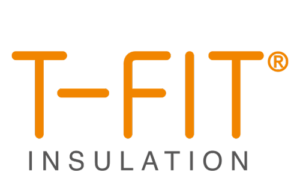Using User Intent to Improve Your SEO
When it comes to SEO, don’t make the mistake of thinking that all you have to do is rank your keywords on the first page of the Google SERPs.
The really important thing is what happens after that.
You could be ranking in the number-one spot for your main keyword, but that does not mean you are going to convert all those visitors into customers. It’s what they find on your site that determines the success of your high ranking.
And this all comes down to user intent.
What Is User Intent?
User intent is essentially what the user is looking for, their reason for searching in the first place.
For example, someone who is searching for “buy running shoes” is probably looking to make a purchase. Someone looking for “best washing machine” is probably in research mode.
Google cares about user intent. It wants to provide its users with the most relevant results, and that means you should also care about providing searchers with the right types of content based on user intent.
By creating content that matches the user intent for a specific keyword, you are providing the reader with what they want, giving yourself a better chance of ranking highly, and improving your chances of getting better conversions.
Find Out the Intent Behind Your Keywords
It’s all well and good when you are targeting keywords with a clear user intent, like the above examples. But sometimes it is not so easy.
If you are targeting generic keywords, for example, the user intent may not be clear.
In this case, try searching for the keyword and see what comes up. You will probably be able to judge by the top results what type of user intent is behind the keyword according to Google’s algorithm.
SearchEngineLand uses the example of ‘bed bugs’. When typed into search, all of the results are about getting rid of bedbugs in some way – so this is the user intent behind the keyword.
There are also various types of user intent. We briefly touched upon user intent that revolves around buying and seeking information, but there are more.
This CrazyEgg blog categorises intent into three types: Navigational (searching for a specific website), Informational (seeking information) and Transactional (looking to make a purchase).
The user intent behind your keyword may fit into one of these, or there may be different types of intent behind it. The important thing is to know which you should be targeting with your content.
Target the Right Customers with User Intent
You should always focus on keywords when you are creating content, and that has not changed. But also focus on creating content that answers the user intent behind those keywords.
It’s good SEO practice to answer the questions that people have and to provide them with exactly what they want when they carry out a search.
This gives you more chance of ranking highly, and when visitors arrive on your site, you’ll have a better chance of converting them.
Google is also getting smarter. It often displays results that don’t even include the keyword used in the search, and it can work out what the searcher wants to find based on its understanding of the relationship between various things.
This will get more powerful as its algorithm becomes more advanced.
The one thing that it will always want to show its users is good content that provides them with exactly what they are looking for – so provide this, and your SEO will be in good shape for the foreseeable future.
As digital marketing consultants, we provide clients with a wide range of complimentary digital marketing service and solutions, from conversion rate optimisation (to increase sales and enquiries from client websites) to PPC management and from SEO marketing to social media marketing – talk to us to find out how we help organisations like yours improve site traffic and, most importantly, revenue!







